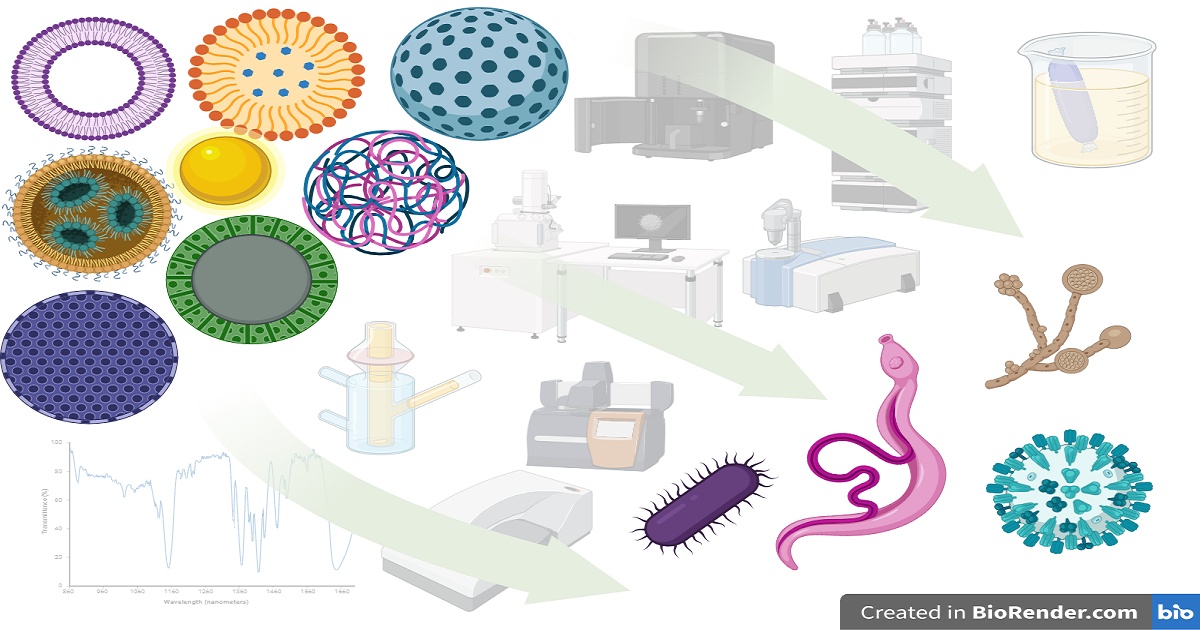Development of New Nanotechnological Systems Loaded with Drugs for Infectious Disease Application
A special issue of Pharmaceutics (ISSN 1999-4923). This special issue belongs to the section "Nanomedicine and Nanotechnology".
Deadline for manuscript submissions: 31 December 2025 | Viewed by 9075

Special Issue Editors
Interests: development and characterization of nanotechnological systems applied in microbiology
Interests: mucoadhesion; targeted delivery; lipid-based nanocarriers; drug delivery systems; polymeric systems; nanotechnology
Special Issues, Collections and Topics in MDPI journals
Special Issue Information
Dear Colleagues,
We are pleased to invite you to contribute to our Special Issue entitled " Development of New Nanotechnological Systems Loaded with Drugs for Infectious Disease Application”. This Special Issue aims to bring together advanced and updated research on the development and characterization of different nanoscale systems for the incorporation of drugs and control of infectious diseases.
The increase in or emergence of multi-resistant microorganisms to different antimicrobial classes worries major health organizations. Given this, much has intensified the development of new nanotherapeutic options to contribute to the decrease in and control of infectious diseases.
This Special Issue aims to include studies, original or review, on nanosystems loaded with drugs against infections. In this Special Issue, articles that address the characterization of nanoscale systems, in vitro and in vivo release methods for drugs loaded into nanosystems, pharmacokinetic studies, and stability tests are welcome. Regarding biological applications, articles involving studies of nanosystems against microorganisms in their planktonic form or biofilms will be considered. Studies with in vivo models or alternative in vivo models (for example, Galleria mellonella, Zebra fish, Caenorhabditis elegans, etc.) are welcome.
In this Special Issue, original research articles and reviews are welcome. Research areas may include (but not limited to) the following:
- Development and characterization of nanotechnological systems;
- In vitro (or in vivo) controlled liberation test;
- Pharmacodynamic and pharmacokinetic studies;
- Nanomedicine;
- In vitro antimicrobial determination;
- In vivo antimicrobial determination (or alternative models);
- Antibiofilm potential of new formulations;
- Cytotoxicity or toxicity tests;
- Histological tests in infection models.
Dr. Gabriel Davi Marena
Prof. Dr. Marlus Chorilli
Prof. Dr. Taís Maria Bauab
Guest Editors
Manuscript Submission Information
Manuscripts should be submitted online at www.mdpi.com by registering and logging in to this website. Once you are registered, click here to go to the submission form. Manuscripts can be submitted until the deadline. All submissions that pass pre-check are peer-reviewed. Accepted papers will be published continuously in the journal (as soon as accepted) and will be listed together on the special issue website. Research articles, review articles as well as short communications are invited. For planned papers, a title and short abstract (about 250 words) can be sent to the Editorial Office for assessment.
Submitted manuscripts should not have been published previously, nor be under consideration for publication elsewhere (except conference proceedings papers). All manuscripts are thoroughly refereed through a single-blind peer-review process. A guide for authors and other relevant information for submission of manuscripts is available on the Instructions for Authors page. Pharmaceutics is an international peer-reviewed open access monthly journal published by MDPI.
Please visit the Instructions for Authors page before submitting a manuscript. The Article Processing Charge (APC) for publication in this open access journal is 2900 CHF (Swiss Francs). Submitted papers should be well formatted and use good English. Authors may use MDPI's English editing service prior to publication or during author revisions.
Keywords
- nanosystems
- controlled drug release
- infectious diseases
- microbial resistance
- pathogenic microorganism
- drug delivery systems
- nanotechnology
- nanotherapy
Benefits of Publishing in a Special Issue
- Ease of navigation: Grouping papers by topic helps scholars navigate broad scope journals more efficiently.
- Greater discoverability: Special Issues support the reach and impact of scientific research. Articles in Special Issues are more discoverable and cited more frequently.
- Expansion of research network: Special Issues facilitate connections among authors, fostering scientific collaborations.
- External promotion: Articles in Special Issues are often promoted through the journal's social media, increasing their visibility.
- Reprint: MDPI Books provides the opportunity to republish successful Special Issues in book format, both online and in print.
Further information on MDPI's Special Issue policies can be found here.








